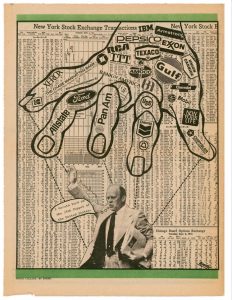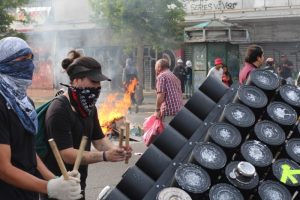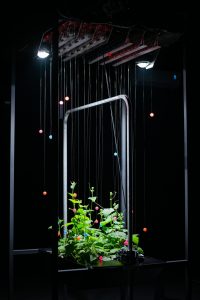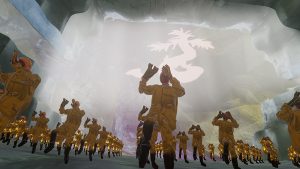Independent Robotic Community, by Ricardo Iglesias and Gerald Kogler, looks for new forms of interaction between robots and humans.
A first level features a community of small robots divided into two groups, the black one and the green one. Each group has a primary level of socialization and a series of sounds conforming a unique vocabulary. Each robot’s initial state consists of a very simple movement within a delimitated spatial environment. When it comes across other robots, it exchanges information about its state with sounds and increases its degree of socialization. Each increase implies a development in the complexity of movements.
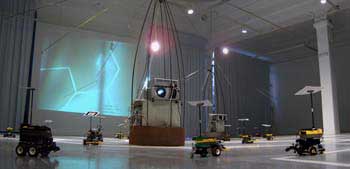
On a second level the users can participate with mobile phones and the Internet. They can connect to a program which communicates with the robots in real time and take influence on the state of sociability of each of the independent groups.
The installation consists of twenty robots, several cameras that record their movements in space and communicate the encounters that are generated to a social network system. These encounters are shown on a projector as a graphic display of crisscrossing lines. One of the robots is also equipped with a spy camera that represents one individual’s subjective point of view versus the graphic display of social statistics.
Made with Lego, the robots include also a programmable microprocessor, a chip to augment the possibilities to make different actions, and an infrared sensor to communicate. Two computers at the centre of the installation study the behaviour of the machines and send IR signals to modify the sociability of either the black or the green community. More images.
Via res-Qualia.
Related: the Nice Bots.

